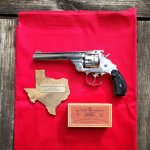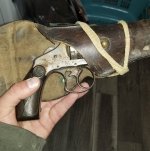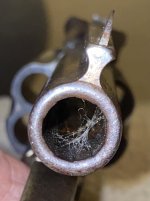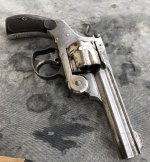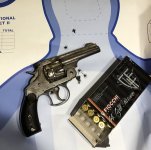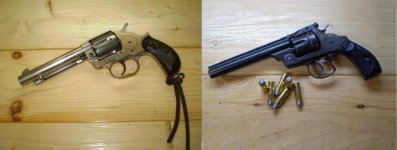I’m considering getting a first model .44 Double Action, I’ve recently gotten interested in the old west stuff (more than I was before) and I’ve always been interested in the Schofield (the CLEARLY superior revolver to the Single Action Army), but that lead me to the first model .44 double action (I’ve also heard it called the “New Frontier,” and the Double Action Number 3), which is basically the same thing but double action, it would seem to me that would make it the best revolver produced in the “Old West” period, yet most people don’t even know it was ever made, they might have heard of the Schofield, or the Number 3, the Russian, or even the New Number 3, but not this. That interests me.
What calibers were they made in? Was it just .44 Russian, .44-40, .455 Webley, and .38-20? Was a .45 LC or .45 Schofield version ever made?
Would a holster made for a Schofield work?
What is the current value?
Are parts generally available?
Were they rated for smokeless or were they black powder only?
Was a speed loader ever made? Will any modern ones work?
What were the available barrel lengths? What was the most common?
Were all the frames really made in 1898 or earlier? Why would Smith and Wesson sit on the frames for 15 years? Were they assembled to order? How do you get the production date?
What calibers were they made in? Was it just .44 Russian, .44-40, .455 Webley, and .38-20? Was a .45 LC or .45 Schofield version ever made?
Would a holster made for a Schofield work?
What is the current value?
Are parts generally available?
Were they rated for smokeless or were they black powder only?
Was a speed loader ever made? Will any modern ones work?
What were the available barrel lengths? What was the most common?
Were all the frames really made in 1898 or earlier? Why would Smith and Wesson sit on the frames for 15 years? Were they assembled to order? How do you get the production date?

